When it comes to cars, wealthy individuals are often associated with the world’s most extravagant supercars and rare collectibles.
But behind the scenes, even billionaires sometimes defy expectation—opting for vehicles that reflect personal stories, nostalgia, or sheer eccentricity rather than just a jaw-dropping price tag.
From humble hatchbacks to quirky classics, these choices reveal a surprising side to the world’s richest.
Get ready to discover the unexpected favorites that have found a place on billionaire bucket lists—cars that tell a story, spark a memory, or simply make life more fun.
For decades, people have turned to Mopar for upgrades that’ll make their Dodge Challenger go faster, Jeep Wrangler climb higher, or Ram 1500 more useful. But many go to outside companies for their exterior, interior, performance, and storage needs. Mopar is aware of this, which is why it has launched the Affiliated Accessories line of aftermarket parts and accessories.
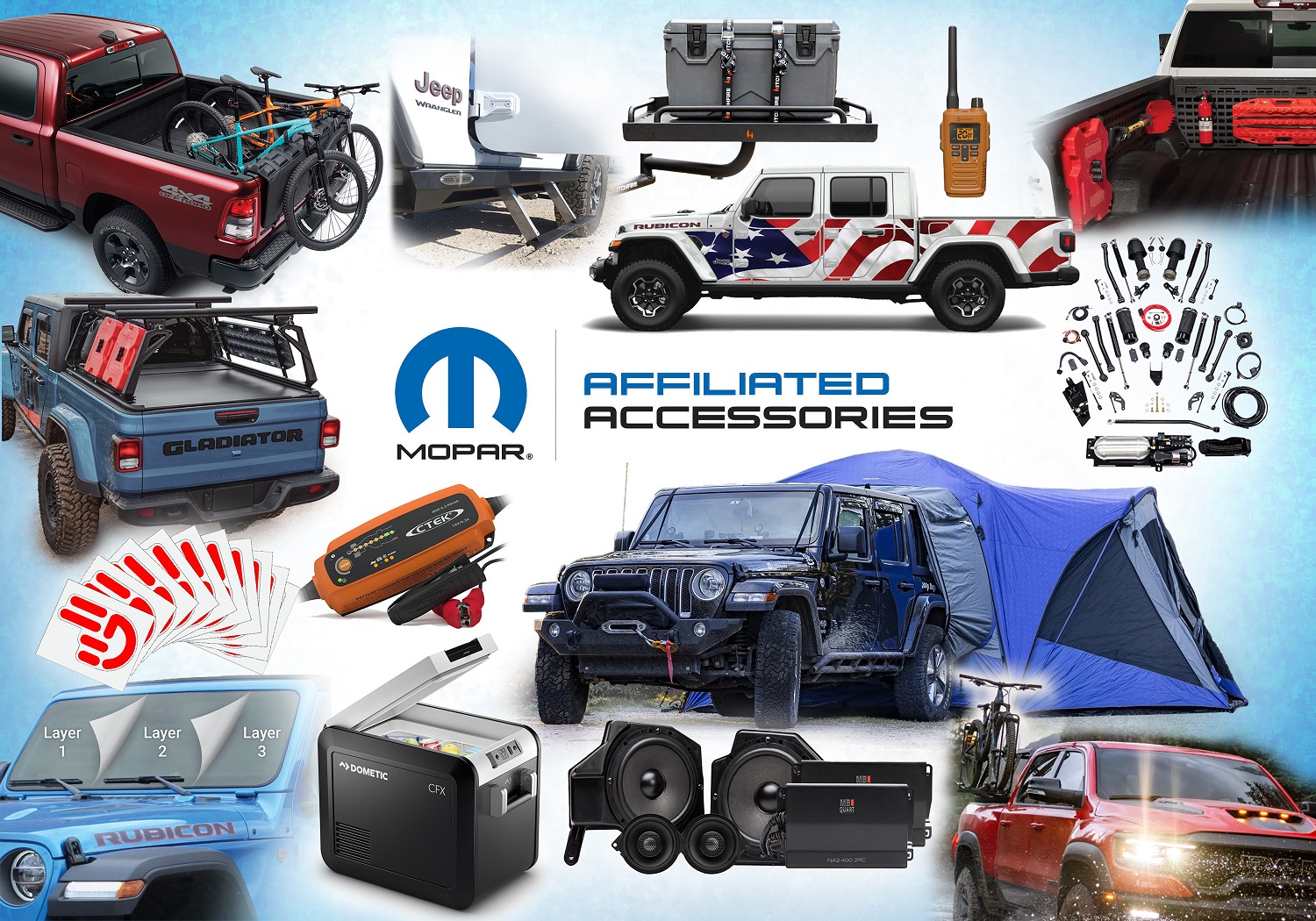
According to Stellantis, “The new Mopar Affiliated Accessories program offers more than 1,000 popular accessories from well-known and preferred aftermarket supplier partners” for Chrysler, Dodge, Jeep, and Ram dealerships in the U.S. Those include everything from lighting and audio/video to exterior graphics and lift kits, all of which are guaranteed by their respective manufacturers and reviewed by Mopar to make sure they fit properly. They can be ordered either through the Mopar eStore or at a dealership; once they arrive at the dealer, they can be installed there or picked up by the customer.
The current list of Affiliated Accessories suppliers includes:
Below are some of the more interesting Affiliated Accessories:
- 75-liter Dometic CFX3 75 Powered Cooler with two adjustable temperature zones: $1,345
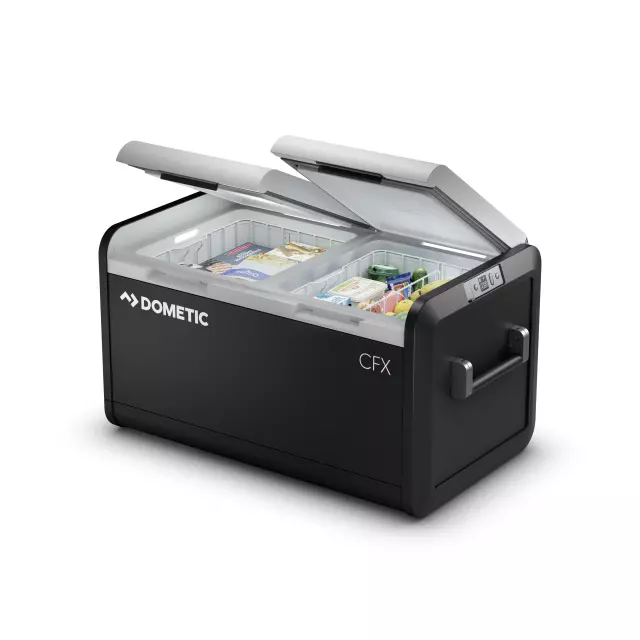
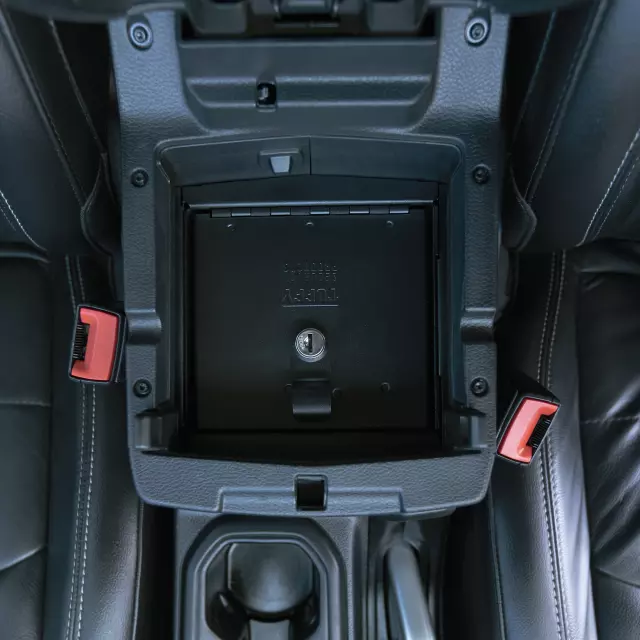
- Jeep Wrangler Unlimited 3.5-inch Dynamic Lift Kit by AccuAir: $7,405
- ClearLidz Original Interchangeable Panoramic Top for the 2020-2024 Jeep Gladiator: $1,494
- Cascadia 4×4 VSS 30 Watt Solar System for the Jeep Wrangler and Gladiator: $441.99
I recently came across a photo of my grandma’s 1990 Chevrolet Beretta (see photo above, with my mom posing by it) and it prompted me to poll a few of my friends about what vehicles their grandmothers drove. I have vivid memories of getting picked up at Hillcrest Elementary in Logan, Utah, in grandma’s black-on-black Chevy. Her license plate frame said, “My Grandkids Are Cuter Than Yours.” I’ve already shared a little of my “family car history” when discussing my grandpa’s Buick Special and my dad’s Chevy Nova.
Now, it’s Grandma’s turn.
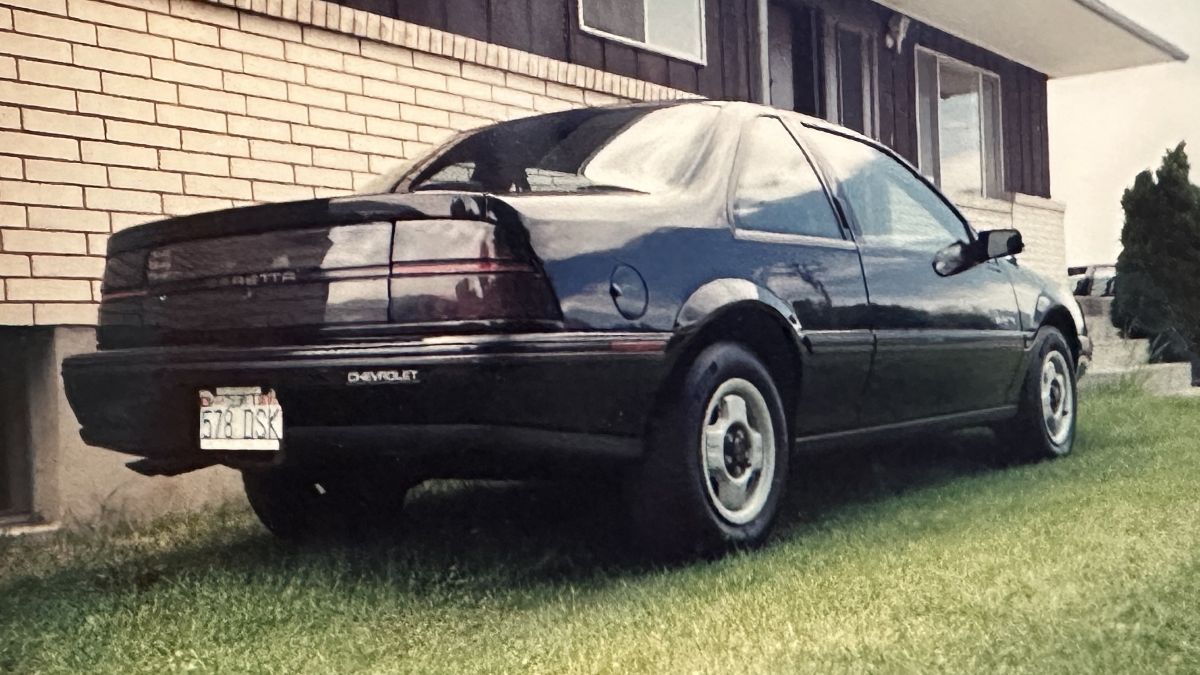
Beretta Backstory
The Beretta coupe was sold from 1987 to 1996, sharing the General Motors L-body platform with its four-door counterpart, the Chevrolet Corsica. A wide variety of engines (six, in fact) were offered throughout the car’s 10-year production run. On paper, the sportiest Beretta was the 1990-93 “GTZ,” which employed the 2.3-liter Quad 4 engine rated at 180 horsepower and came standard with a Getrag five-speed manual transmission.
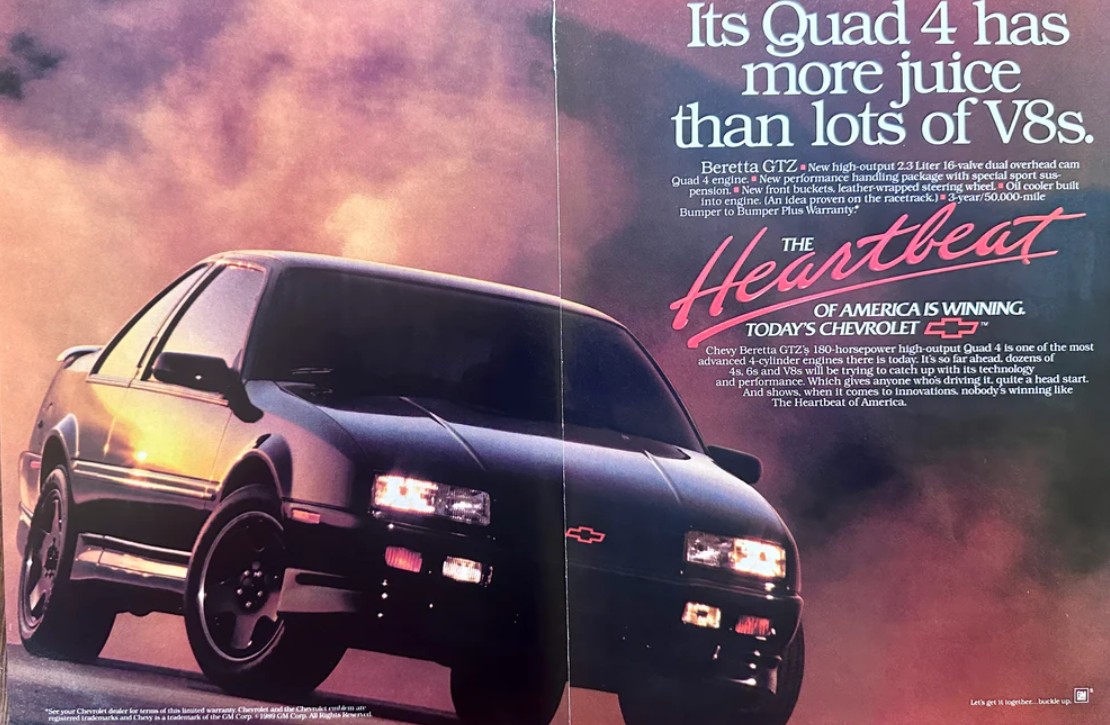
The Beretta’s appearance was penned by none other than Jerry Palmer, the same designer responsible for the iconic C4 Corvette. The Beretta employed an aerodynamic shape for its time—especially considering the fact that most 1980s cars were boxy (see: Chevrolet Celebrity). One of its noteworthy exterior features was its vertical door handle design, later used on other cars like the Oldsmobile Cutlass Supreme and the Pontiac Grand Prix.
Noteworthy Trivia
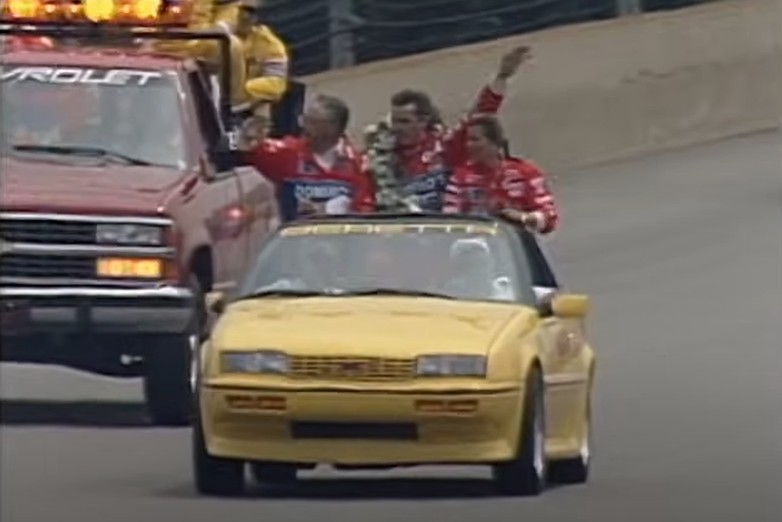
The car’s name was the subject of a trademark dispute that ended up being settled out of court in 1989. Italian firearms manufacturing company Beretta (or more formally, “Fabbrica d’Armi Pietro Beretta”) took issue—understandably—with General Motors’ use of the name. The matter was eventually resolved when GM donated $500,000 to a Beretta-sponsored charity. Chevrolet also gave a car to Beretta. I wonder where that unit ended up?
As its top claim to fame, a Beretta was featured as the official pace car of the 74th Indianapolis 500 on May 27, 1990. I was able to find a full race broadcast of the Indy 500. The car driven by General Manager Jim Perkins was in fact a customized convertible, although it did retain the use of a B-pillar.
Get In the Game!
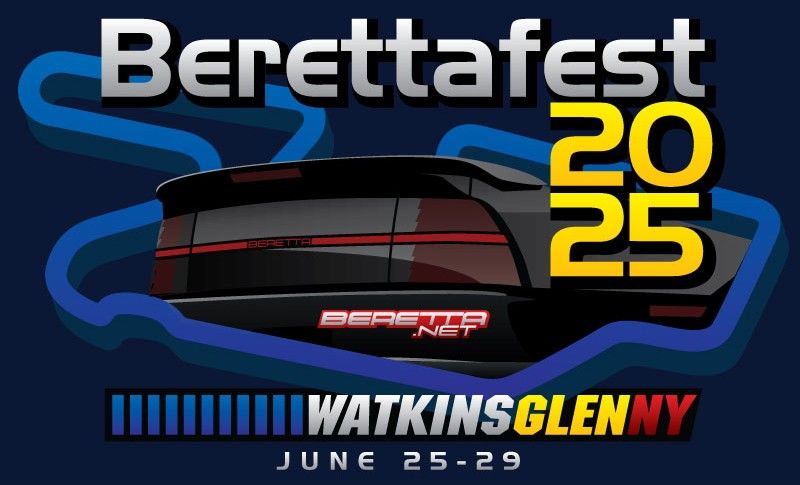
Much like with any other automotive make and model, there is a community of Beretta enthusiasts out there. Members even get together for an annual even called Berettafest, similar to what I’ve done with my Acura Legend and Acura NSX families.
Berettafest 2025, coincidentally, just concluded. The event was held in Watkins Glen, New York, from June 25-29. If you didn’t make it, there’s always next year! Speaking of, there’s a 49-mile (!) yellow Beretta Indy for sale on ClassicCars.com. (Click here to view the listing). You’d be the talk of the event if you showed up in that time capsule next year.
Your Turn
I’d love to hear it from our audience: What did (or does) your grandma drive?
My Classic Car 2025
Please fill out the information requested below! Give us YOUR story of your car, and please include photos.
My Classic Car Submission Form
How Can We Reach You?
What do you want to share about this vehicle?
Max. file size: 50 MB.
Right now on AutoHunter, you can find this 1986 Nissan 300ZX, a modern classic Japanese car powered by a 3.0-liter V6 connected to a five-speed manual gearbox. Finished in Hot Red and equipped with T-tops over a black and white fabric interior, this Z31 300ZX comes from the dealer in Massachusetts with an owner’s manual, service records, clean CARFAX report, and clear title.
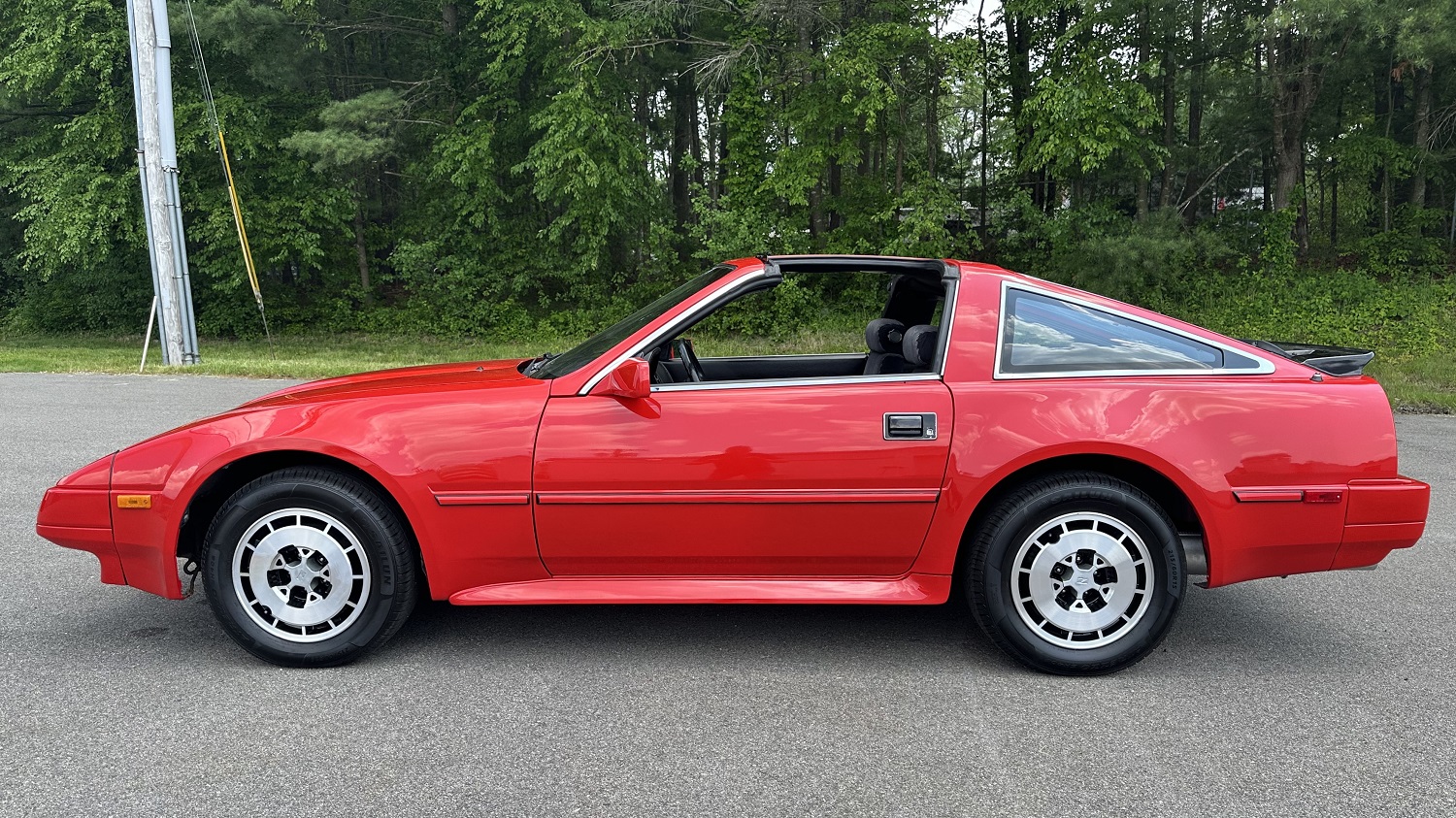
The angular Hot Red exterior features a repainted front fascia, pop-up headlights, body-color side moldings and mirror caps, tinted glass T-top panels, lift-up rear hatch with a wiper, black rear spoiler, and single exhaust outlet with dual tips.
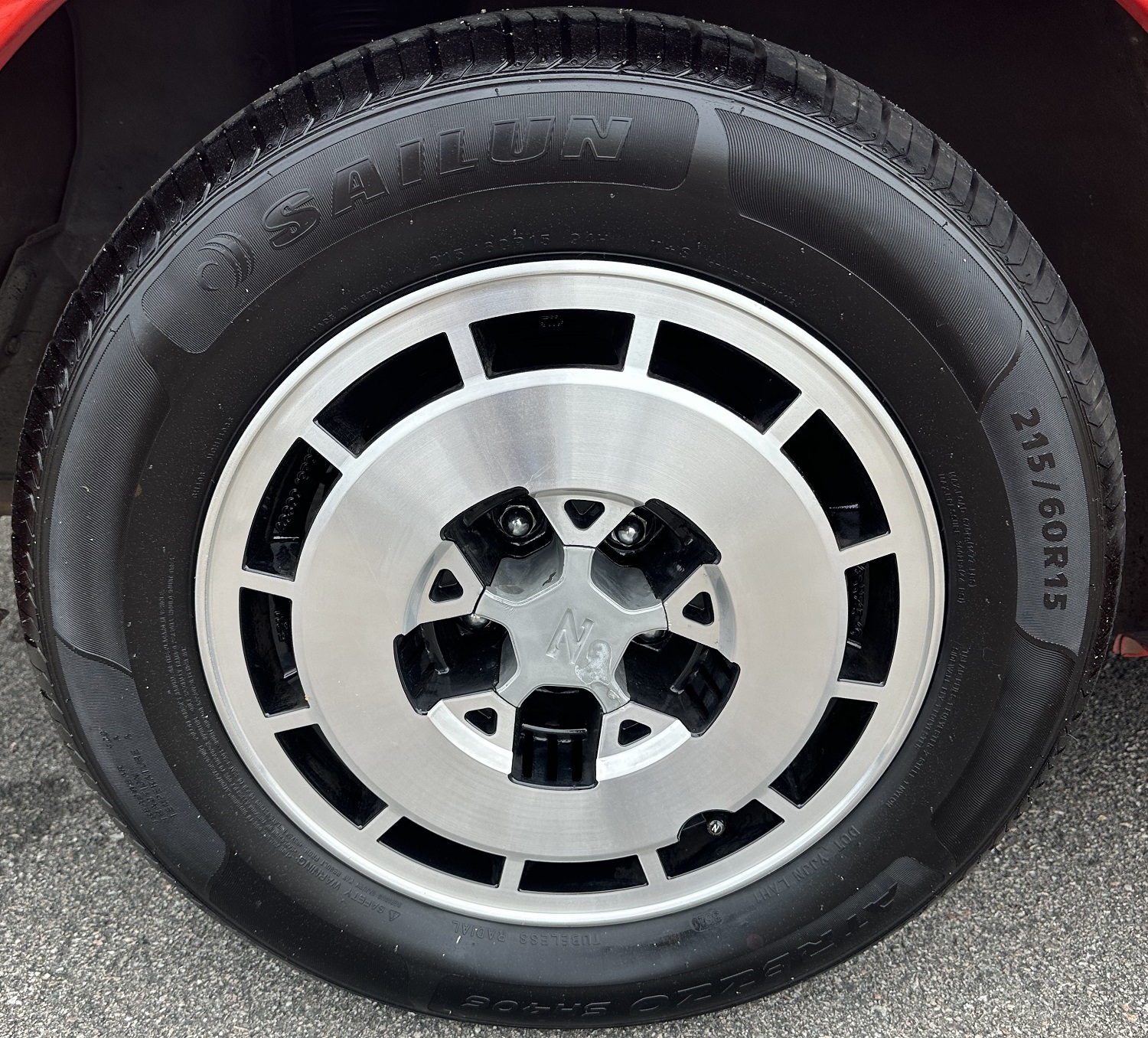
A set of 15-inch factory wheels with 215/60 Sailun Atrezzo tires carry this Z down straightaways and through curves.
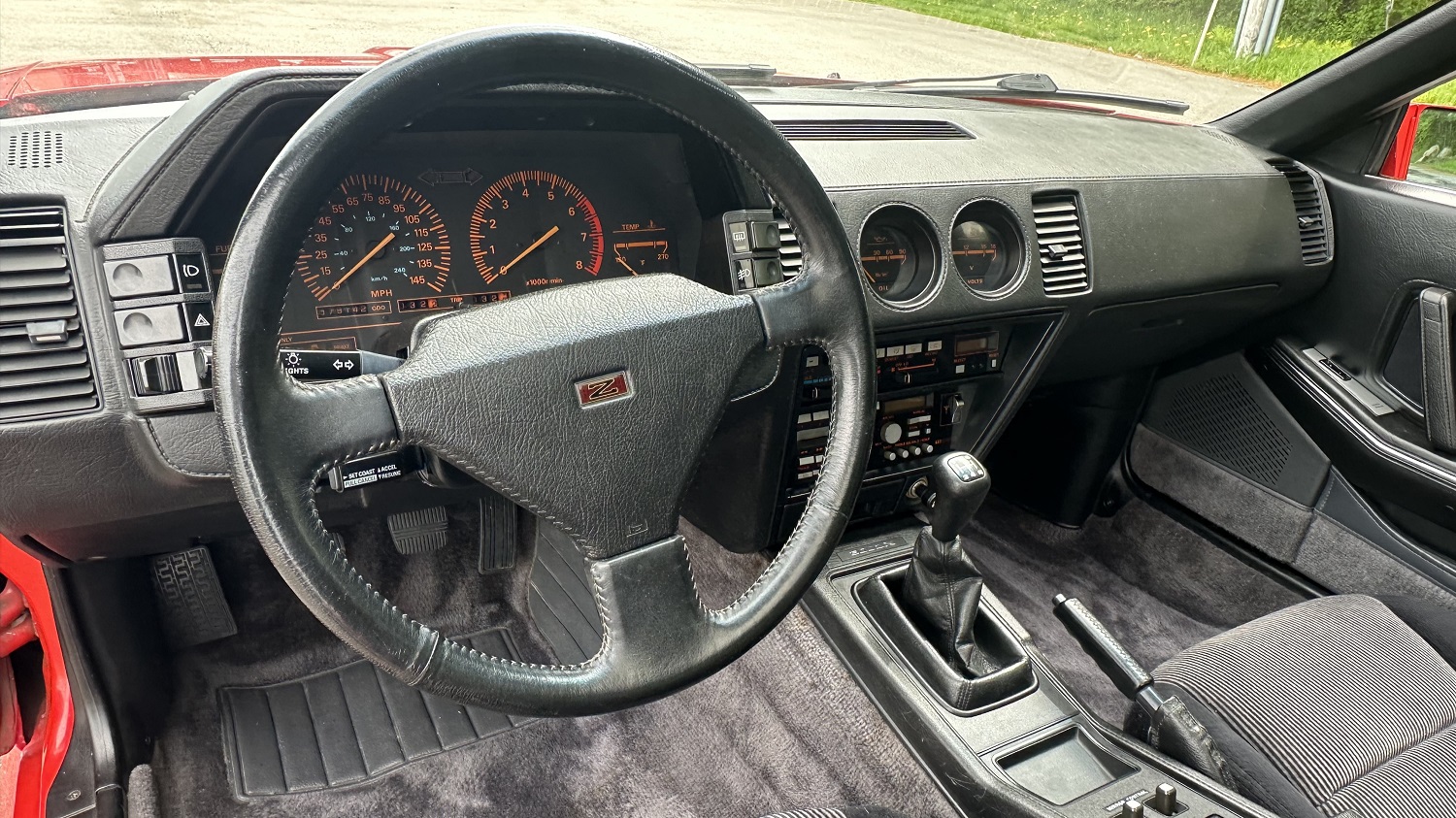
The two-seat cockpit is furnished with black fabric bucket seats with black and white striped cloth inserts. Interior features include power windows, locks, and mirrors; cruise control; power steering; power driver’s seat; AM/FM/cassette radio (which the dealer says only produces static); and center console.
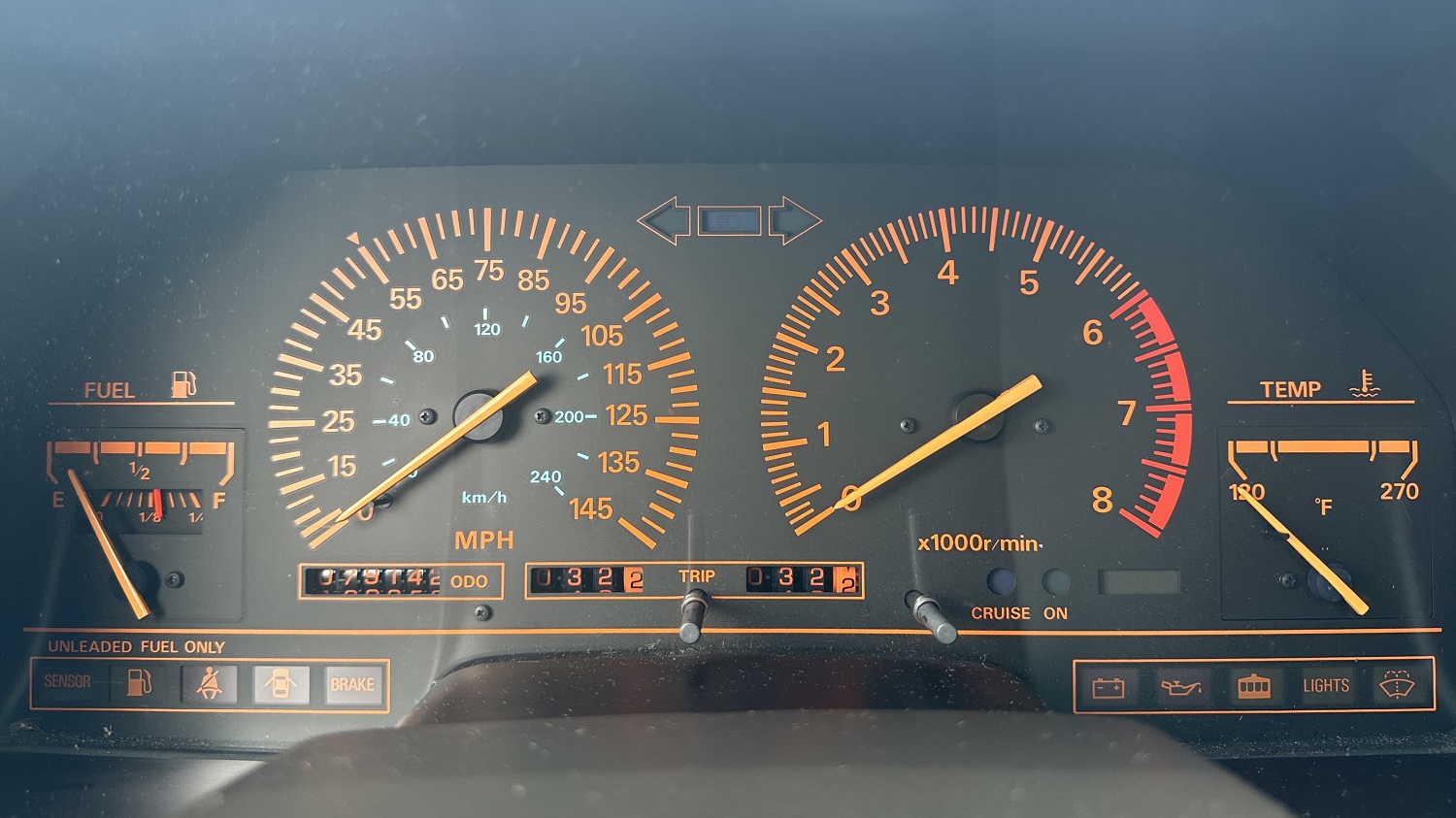
Instrumentation consists of a 145-mph speedometer, an 8,000-rpm tachometer, and gauges for the fuel level, temperature, oil pressure, and voltage. The odometer shows 79,142 miles, a slight increase from the CARFAX report’s latest mileage figure of 74,962 miles from July 2023.
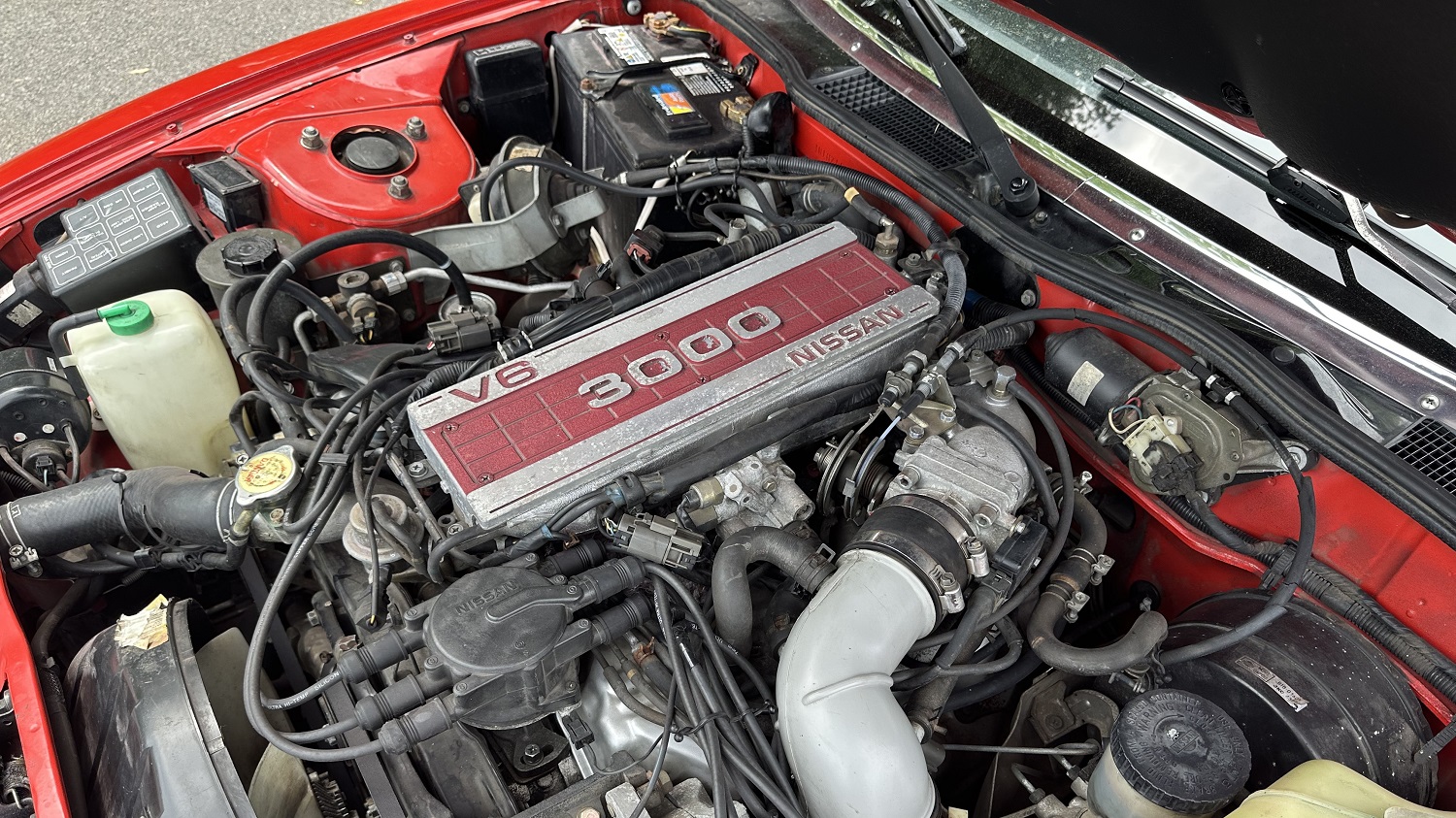
As its name implies, the 300ZX has a 3.0-liter V6, which delivers its fuel-injected power to the road through a five-speed manual transmission and the rear wheels. A fully independent suspension and power brakes help make sure this car lives on.
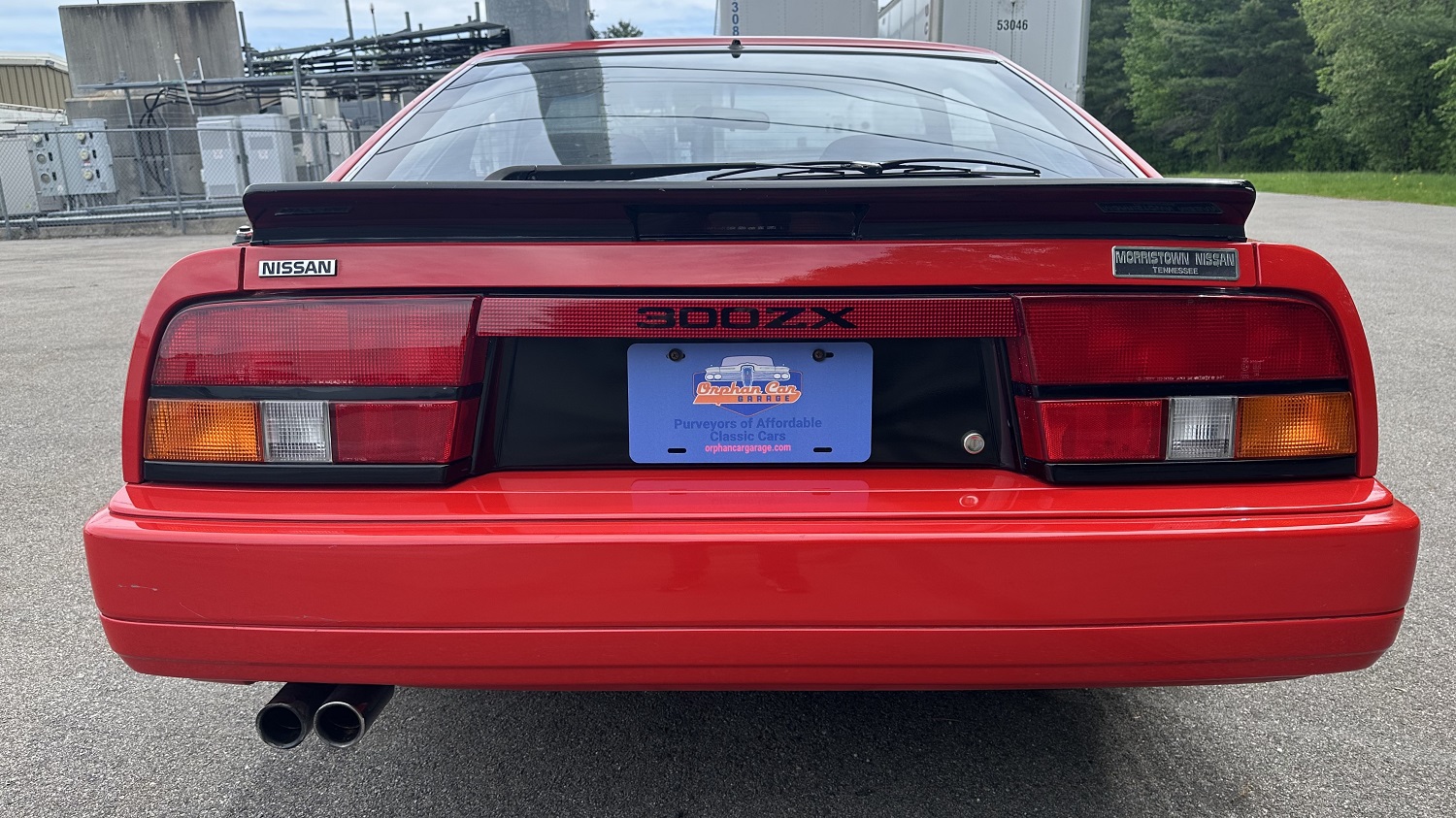
If you want this preserved piece of Nissan Z car history, bid on it now. The auction for this 1986 Nissan 300ZX ends on Wednesday, July 23, 2025, at 11:00 a.m. (PDT).
Visit the AutoHunter listing for more information and a photo gallery
It is timely to feature a Morgan as a Pick of the Day, as the company—after an absence of many years—is once again selling their four-wheeled cars in the U.S. While an upgrade from the earlier models, but in essence it still looks the same as the original Morgan 4/4, but with an upgraded drivetrain and a few more options. My Pick of the Day is a car I almost decided to skip and just buy myself, a 1985 Morgan 4/4 four-seater listed for sale on ClassicCars.com at a dealership in Christiansburg, Virginia.
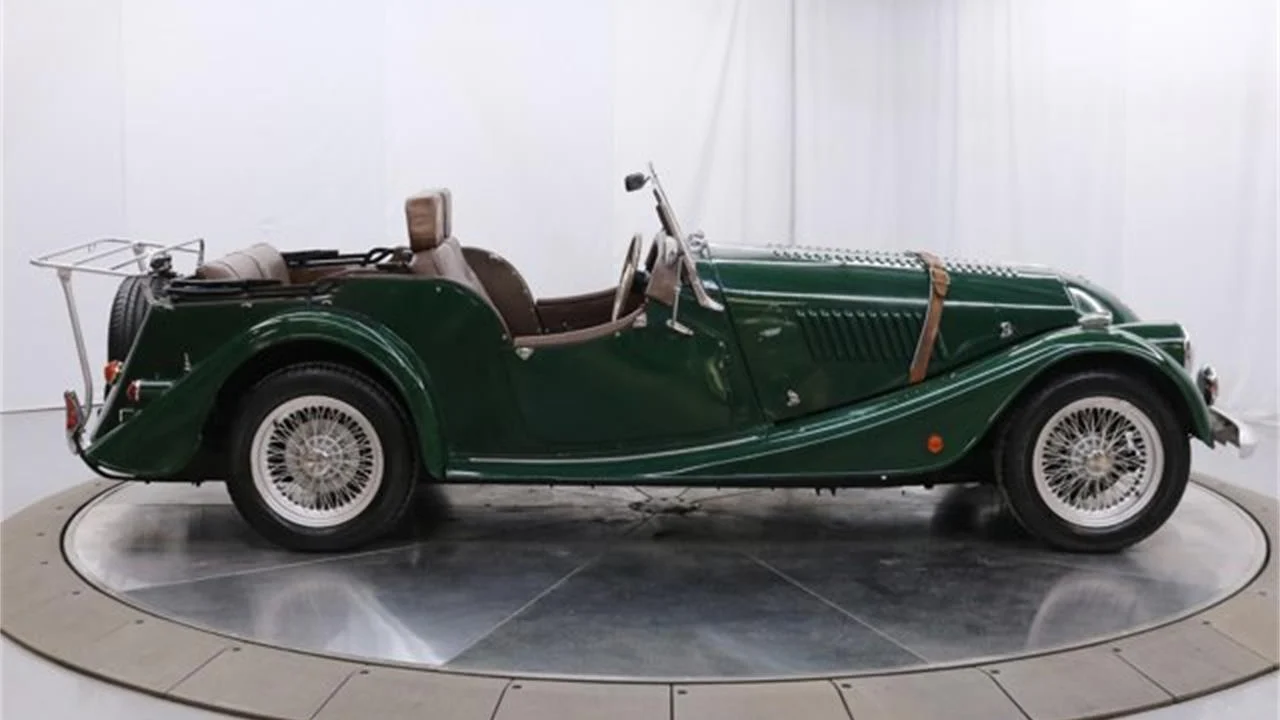
I really have a soft spot for Morgans, not only because they are the last truly hand-built sports cars in the world, but also because the company continues to exist despite still building and selling a model that originally went on sale in 1936. That sounds crazy and, in a lot of ways, it is. The company has struggled at times but remains its own entity and not a subsidiary of a larger manufacturer. It also hasn’t morphed into a modern interpretation of what a Morgan would be in the future. The newest Morgan is basically a classic 1930s British roadster you can buy new—that is amazing to me. I love that Morgan is still with us, doing things the way they always have.
The exterior of this 4/4 with its British Racing Green paint looks to be in good condition overall. No, this is not a show car, but instead a car to drive and enjoy. That being said, I’m guessing it would be welcome at any British car show you can think of.
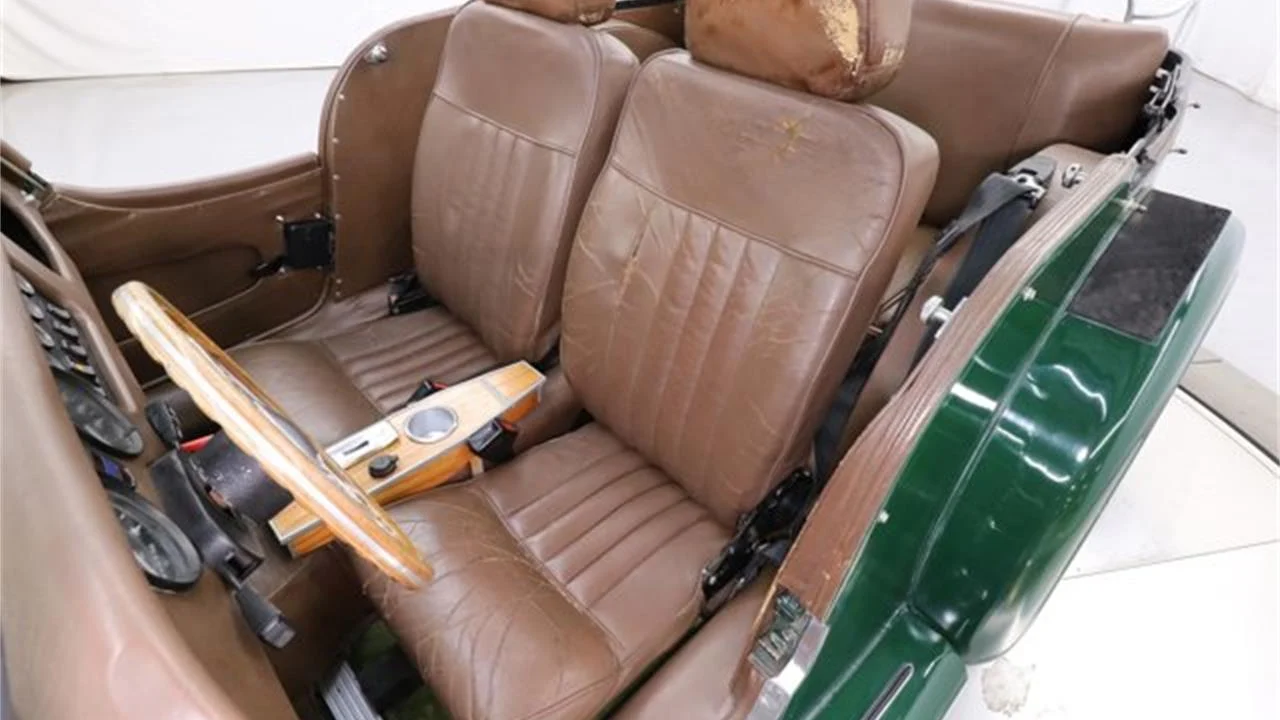
This more modern 4/4 has much-improved seats and interior, with more modern gauges and such. The Connolly leather seats look to be in decent shape but could do with a re-dye. With their high backs and even headrests, these seats are immensely more comfortable than those found in vintage Morgans. Yes, the leather is a bit worn, but somehow that seems to be in character with the entire concept of a Morgan. One of the reasons I like this particular car is because, being a four-seater, it is the only Morgan model in which my 6-foot-4 frame can fit. Not only do I fit, but I fit comfortably.
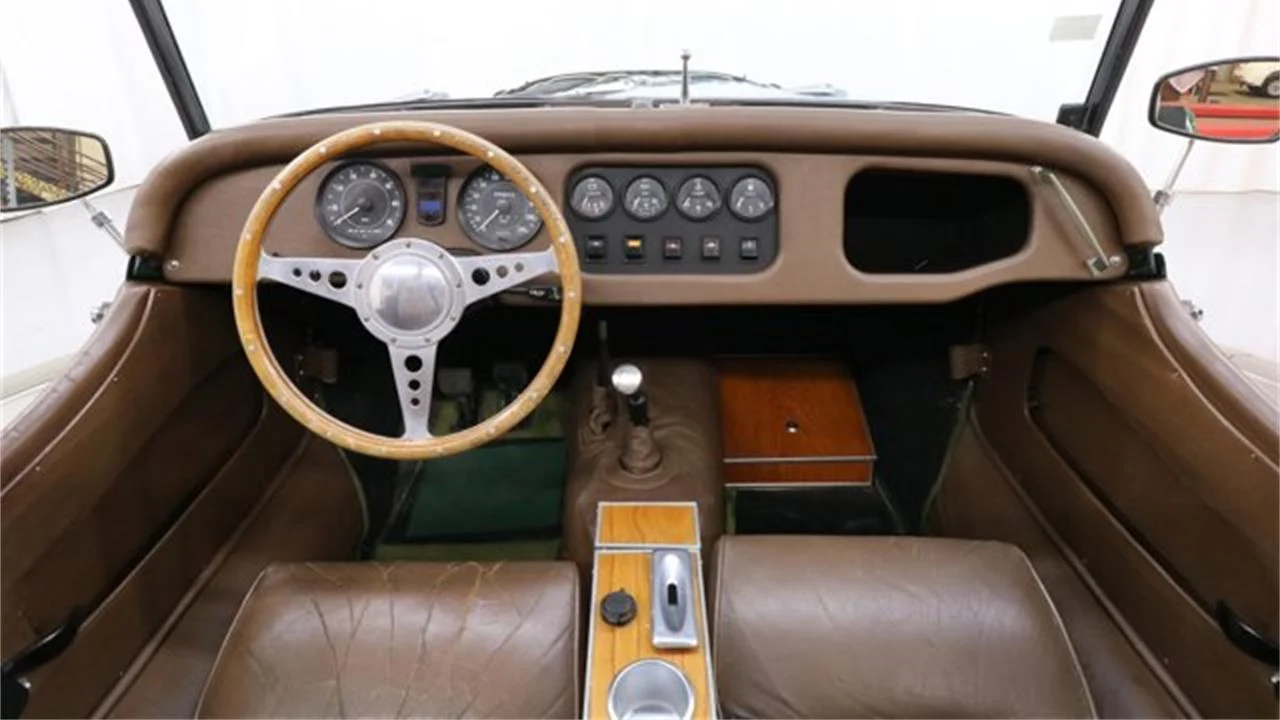
Being a later-model 4/4, this car is considerably more powerful than the original, with a more modern 1.6-liter Ford Sigma inline-four engine fed by a single-barrel carburetor. Power is through a manual transmission (likely a five-speed). All looks good overall, including the underside. I would call the dealer and get a driving report as, like the transmission, the information on this Morgan’s mechanical condition is not provided in the listing.
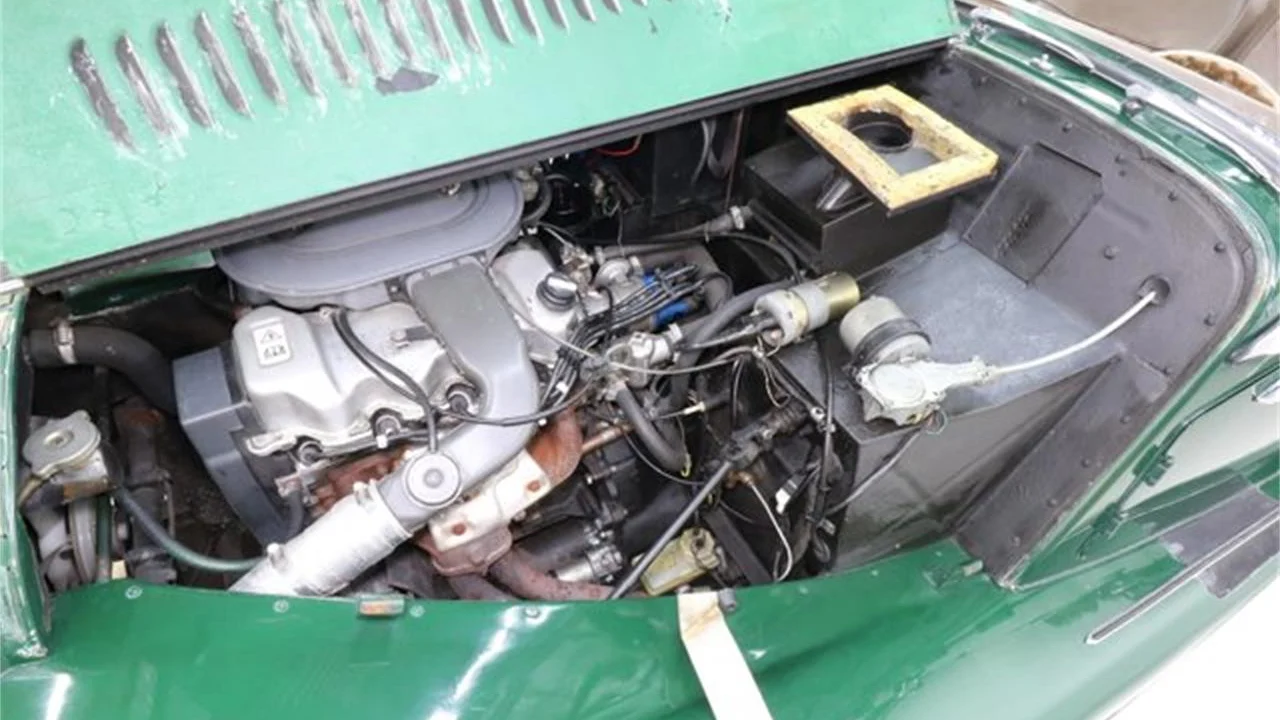
The asking price for this 1985 Morgan 4/4 is a very reasonable-sounding $24,777, which to me seems like an excellent buy, especially if you are looking for a true classic British sports car experience. If that is the case, no single car delivers that better than a Morgan, as it is a mobile time machine to another era.
Click here to view this Pick of the Day on ClassicCars.com
Imagine getting behind the wheel of a car that delivers more than you paid for—smooth handling, advanced tech, and head-turning style, all at a price that makes you feel like you’ve uncovered a secret deal. That’s the thrill of smart car shopping: discovering vehicles that punch above their weight in value, performance, or features.
These aren’t just budget rides; they’re cleverly engineered machines that let you enjoy premium experiences without the premium price tag.
Choosing wisely means you can drive more and spend less, truly hacking the system and redefining what affordable means on the road.
Get ready to meet the 16 cars that make this possible—and might just change how you see value forever.
Muscle cars have always possessed a rebellious spirit, refusing to stay within the lines drawn by conventional automakers. From thundering V8 engines to flamboyant styling and innovative engineering, these machines have often defied expectations—sometimes even the law.
While many vehicles follow trends, muscle cars have a history of setting them, forever altering the landscape of American car culture.
Their influence extends far beyond horsepower or speed; they’ve inspired generations, dominated racetracks, and become pop culture icons.
This article celebrates 15 legendary muscle cars that didn’t just bend the rules—they shattered them, leaving a lasting mark on the road and in our hearts.
This 1920 Ford Model T is believed to have been built in California in the 1950s. Power is provided by a 1955 Chevrolet 265 V8 topped by a Stromberg carburetor and linked to a Tremec five-speed manual transmission that was installed at a later date. The black-painted steel body is mounted on a Model A frame and accented by the red steel wheels, which were sourced from a later Mercury and wear big-and-littles, and it has lake-style headers, hydraulic drum brakes, and a ’32 grille shell. The seller tells us that within the last year a Walker radiator was installed, the carburetor was rebuilt, and the kingpins, generator, fuel pump, starter, clutch, battery, and ignition components were replaced. Acquired by the seller in 2024, this T-bucket is now offered at no reserve with a clean Arizona title in the seller’s name listing the car as a 1920 Ford.

The seller tells us the T’s steel body is mounted on a Model A frame. Model A headlights and a ’32 grille shell were utilized. The seller believes the flames were applied when the car was built in the 1950s. The lake-style headers are unbaffled.

’40 Mercury steel wheels are mounted with big-and-littles, and ’40 Ford hydraulic brakes were utilized. The seller tells us the brakes were serviced and the tires were mounted during their ownership.

Red upholstery covers the bench squab. There is no floor covering.

A Model A steering wheel was utilized in the build. There is no odometer.

The 1955 Chevrolet 265 V8 is topped by a Stromberg carburetor, which was rebuilt by the seller. The engine has Corvette-script valve covers and a Corvette distributor. Per the seller, within the last year a Walker radiator was installed and the kingpins, generator, fuel pump, starter, clutch, battery, and ignition components were replaced.

A Tremec five-speed manual was installed at a later date.

The car is titled as a 1920 Ford using VIN 3835268, which aligns with March 1920 Model T serial numbers.
This ’32 Ford roadster was completed in 2017 and is based on a Kugel Komponents boxed frame with an all-steel Rod Bods body that has been painted Corvette Millennium Yellow. Power comes from a 5.7-liter LT1 V8 linked to a 700R4 automatic and a Currie Ford 9″ rear end, and the car rides on independent suspension from Kugel Komponents with double-staggered Billet Specialties wheels, Wilwood disc brakes, and Flaming River rack-and-pinion steering. Inside are custom leather upholstery, a modern stereo, and a Lokar shifter, and it also has Headwinds headlights, a Duvall windshield, a custom roll pan, and a flip-down rear plate bracket. Purchased by the seller in 2023 and previously offered on BaT in February 2025, this ’32 roadster is now offered again with a car cover, a build summary, and a clean Florida title in the seller’s name.

The all-steel body was sourced from Rod Bods and has been painted Corvette Millennium Yellow, as has the boxed frame that was sourced from Kugel Komponents. The halogen headlights are from Headwinds, and LED tail lights were utilized. A Duvall windshield, a custom roll pan, and a flip-down rear plate bracket were also installed.

The car rides on Kugel Komponents independent suspension with coilovers both front and rear, while the steering rack is from Flaming River. Wilwood brakes are mounted up front and finned calipers are utilized out back, and the double-staggered Billet Specialties wheels have 205/40-17 and 305/35-20 Michelin tires mounted.

The two-tone leather upholstery is accented by purple piping, a theme that carries over to the door panels. A Hall wiring harness was installed along with a console-mounted Lokar shifter and Clarion stereo controls.

The billet wheel is mounted on a column from Flaming River, and gauges are mounted in a polished surround on the body-color dashboard. The seller has added approximately 130 of the ~200 indicated miles.

The engine is claimed to be a crate 5.7-liter LT1 V8 rated at 300 horsepower. The oil was most recently changed in June 2023, and the car has a Walker radiator and a stainless-steel 15-gallon tank with braided fuel lines.

The 700R4 automatic is linked to a Currie Ford 9″ rear end. The car has a custom dual exhaust system.

A build summary is included with the car.

The car is titled as a 1932 Ford in Florida utilizing VIN 184839329.
This 1932 Ford Tudor sedan was built as a hot rod under previous ownership in the early 2000s before being acquired by the seller in 2015. The 350ci V8 is said to have been built circa 2012 and was paired with a 700R4 automatic transmission that was later fitted by the seller in 2019. The steel bodywork is finished in Glasurit Black and Deltron Silver and mounted over a Deuce Factory frame with a front drop axle, a Posies leaf spring, Aldan American shocks and coilovers, and front disc brakes. Styling elements include blue-outlined scallops, a chopped top, a Rootlieb four-piece hood, peep mirrors, running boards, and a filled roof. The car is equipped with a 9″ rear end, a Holley Sniper EFI, a roller camshaft, Edelbrock aluminum heads, headers, Cragar 15″ wheels, and front disc brakes. The cabin is trimmed in gray cloth and outfitted with Renault front bucket seats, air conditioning, power-operated front windows, a Sony cassette stereo, a Boyds billet steering wheel, and a Thunderbird-sourced bench seat. This Tudor sedan hot rod is now offered with a clean Colorado title in the seller’s name.

The Tudor Sedan body wears Glasruit Black and Deltron Silver Metallic paint with scallops and blue outline stripes, and the seller notes it rides on a Deuce Factory frame and stainless-steel floorboards. Styling details include a Rootlieb four-piece hood, a chopped top, shaved door handles, a high-mount third brake light, peep mirrors, and a hidden power-operated antenna along with full fenders, running boards, and a filled roof, radiator shell, and cowl vent. A dent on the left-rear fender, cracked finish on the left-front fender, and paint chips on the front of the car are noted in the gallery.

The car rides on a Superbell drop axle tube, a Posies Super Slide front transverse leaf spring, billet control arms, and a Mustang-sourced steering box along with a four-bar setup and Aldan American shocks up front. The four-link rear suspension is fitted with Aldan American coilovers.

Cragar 15″ Street Pro wheels are mounted with American Grand Turbo GT tires. Braking is handled by Camaro-sourced front discs as well as rear drums.

The Renault Alliance-sourced bolstered bucket seats wear gray cloth covers, and matching upholstery extends to the 1964 Thunderbird-sourced rear bench as well as the doors and rear panels. Appointments include power-operated front windows, air conditioning, aftermarket cruise control, an overhead console, and a Sony cassette stereo.

The Boyds billet steering wheel sits on a tilting column ahead of a black dashboard fascia with center-mounted VDO gauges. A Holley Sniper EFI module is mounted to the right of the instrument cluster. The five-digit odometer shows 34k miles, approximately 1k of which were added under current ownership. Total mileage is unknown.

The Chevy small-block 350ci V8 is equipped with Holley Sniper fuel injection, Edelbrock aluminum cylinder heads, a roller camshaft and rockers, a Ron Francis wiring harness, and MSD ignition. Block-hugger headers feed an H-pipe exhaust system with Flowmaster mufflers, and cooling is handled by an aluminum radiator and an electric fan. The seller notes the fuel pump was replaced in 2024.

Power is sent to the rear wheels through a four-speed 700R4 automatic transmission and a 9″ rear end with 3.50:1 ring-and-pinion gears.

The vehicle is titled in Colorado as a 1932 Ford using the VIN 3737739 as displayed on the plate above.
